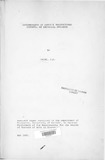| dc.contributor.author | Okore, J. O | |
| dc.date.accessioned | 2013-04-12T08:30:39Z | |
| dc.date.issued | 1987 | |
| dc.identifier.citation | M.A (Economics) Thesis 1987 | en |
| dc.identifier.uri | http://erepository.uonbi.ac.ke:8080/xmlui/handle/123456789/15880 | |
| dc.description | Master of Arts Thesis | en |
| dc.description.abstract | Kenya has recognised the important role played by exports in its economic growth. Various policies
have often been employed as instruments to handle the balance of payment difficulties. To achieve a sustainable
current account balance consistent with an adequate and steady rate of economic growth, Kenya has strongly
emphasized the need for manufactured exports expansion. However, the industrial sector exports' share of total
merchandize exports has not shown significant improvement over the last decade. External and domestic factors are held to be responsible for the slow pace of the manufactured exports' growth. The main purpose of this study is to estimate the elasticities of supply and demand of manufactured exports with respect to traditional variables
income and price and some other shift variables. The determinants of Kenya's manufactured exports in European Economic Community (EEC) market are examined in a simultaneous equation framework taking into consider ration domestic (supply-side) and external (demand-side) variables. The paper utilizes time-series data covering
the period 1970-1984 to assess the relative importance of demand and supply factors explaining Kenya's
manufactured exports1 expansion. Manufactured exports considered in the analysis are those classified under
class 6 of the United Nations International Standard Trade Classifications (ISTC). Based on the findings, the paper argues that domestic (supply-side) factors are more binding than external (demand-side) factors in explaining the
expansion of Kenya's manufactured exports in the EEC market. The results seem to support the structuralists'
case that LDCs exports are mainly constrained by domestic factors. Policies aimed at export expansion should, therefore, be directed at improving and removing structural bottlenecks in the supply of manufactured products.
The paper also attempts to suggest some possible policy implications of the econometric results obtained
from Two-Stage Least Squares (2SLS) estimates. Weaknesses of the analysis and possible further research areas are suggested in the paper. | en |
| dc.description.sponsorship | University of Nairobi | en |
| dc.language.iso | en | en |
| dc.title | Determinants of kenya's manufactured exports: An empirical analysis | en |
| dc.type | Thesis | en |
| local.publisher | Faculty of Arts, University of Nairobi | en |

